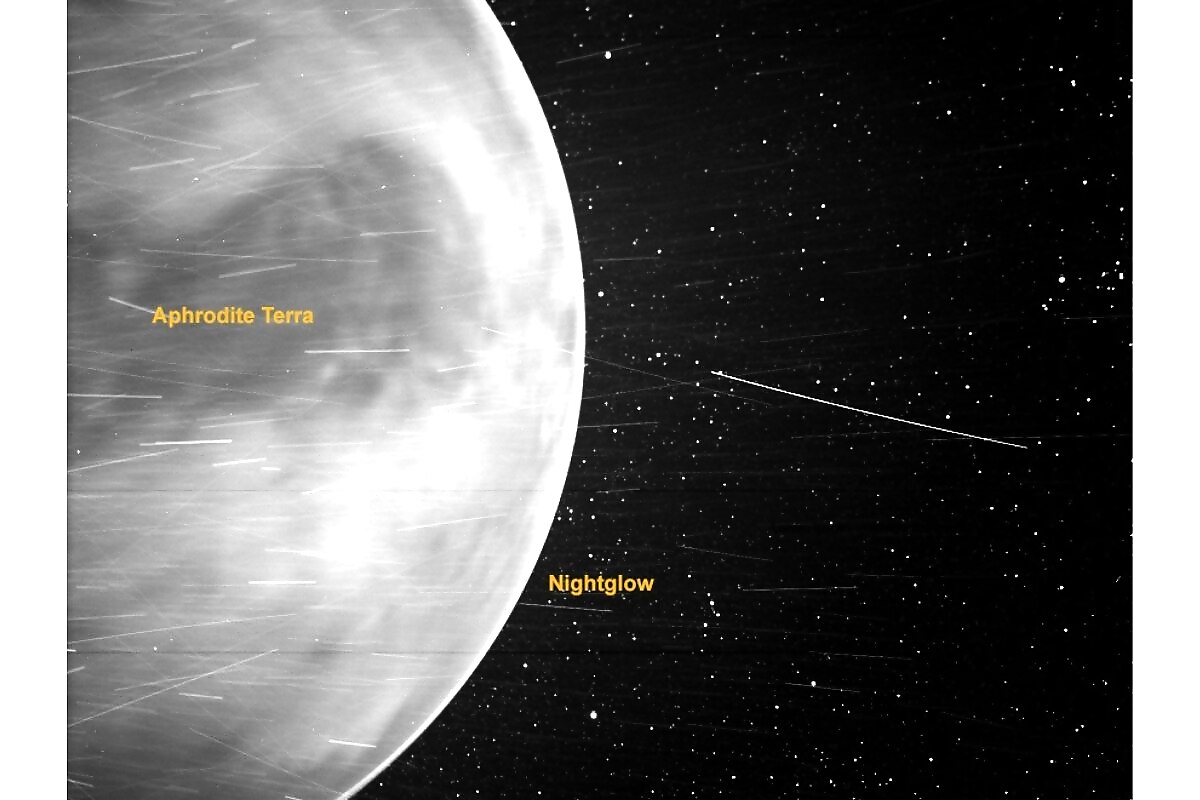
views
NASA’s Parker Solar Probe, which was launched in 2018, recently captured a stunning image of Venus during its close flyby of the planet. According to the US-based space agency, the image was captured in July 2020, and a thorough inspection reveals that there might be some “exciting science opportunities” ahead. Though Parker Solar Probe’s primary focus is the Sun, Venus plays a critical role in the mission as spacecraft uses its gravity to bend the probe’s orbit and bring it closer to the sun. NASA says orbits around Venus yield some unique and even unexpected views of the inner solar system.
In a blog post, NASA stated that during the mission’s third Venus gravity assist on July 11, 2020, the onboard Wide-field Imager for Parker Solar Probe (WISPR) captured a striking image of the planet’s nightside from 7,693 miles away. In the photo, we can notice a bright rim around the edge of Venus that may be nightglow — light emitted by oxygen atoms high in the atmosphere that recombine into molecules in the nightside. The prominent dark feature at the centre of the planet is Aphrodite Terra, the largest highland region on the Venusian surface.

Here’s how NASA breaks down the image: “Bright streaks in WISPR, such as the ones seen here, are typically caused by a combination of charged particles — called cosmic rays — sunlight reflected by grains of space dust, and particles of material expelled from the spacecraft’s structures after impact with those dust grains. The number of streaks varies along the orbit or when the spacecraft is travelling at different speeds, and scientists are still in discussion about the specific origins of the streaks here. The dark spot appearing on the lower portion of Venus is an artefact from the WISPR instrument.”
Moreover, Venus’ Aphrodite Terra appears dark in the image because of its lower temperature, about 30 degrees Celsius cooler than its surroundings. After receiving the image from the Parker Solar Probe, Angelos Vourlidas, the WISPR project scientist from the Johns Hopkins Applied Physics Laboratory (APL) in Maryland, US coordinated the finding with Japan’s Venus-orbiting Akatsuki mission. “WISPR is tailored and tested for visible-light observations. We expected to see clouds, but the camera peered right through to the surface,” said.
Overall, what this means is that due to WISPR’ supposed sensitivity to infrared light, the spacecraft can pick up near-infrared wavelengths of light, and the unforeseen capability would provide new opportunities to study dust around the Sun and in the inner solar system. “If it can not pick up extra infrared wavelengths, then these images — showing signatures of features on Venus’ surface — may have revealed a previously unknown ‘window’ through the Venusian atmosphere,” the post reads.
For more insight into the July 2020 images, the WISPR team planned a set of similar observations of the Venusian nightside during Parker Solar Probe’s latest Venus flyby on February 20, 2021. Mission team scientists expect to receive and process that data for analysis by the end of April. Parker Solar Probe is part of NASA’s Living with a Star program to explore aspects of the Sun-Earth system that directly affect life and society. The Living with a Star programme is managed by the agency’s Goddard Space Flight Center in Greenbelt, Maryland, for NASA’s Science Mission Directorate in Washington.
Read all the Latest News, Breaking News and Coronavirus News here




















Comments
0 comment